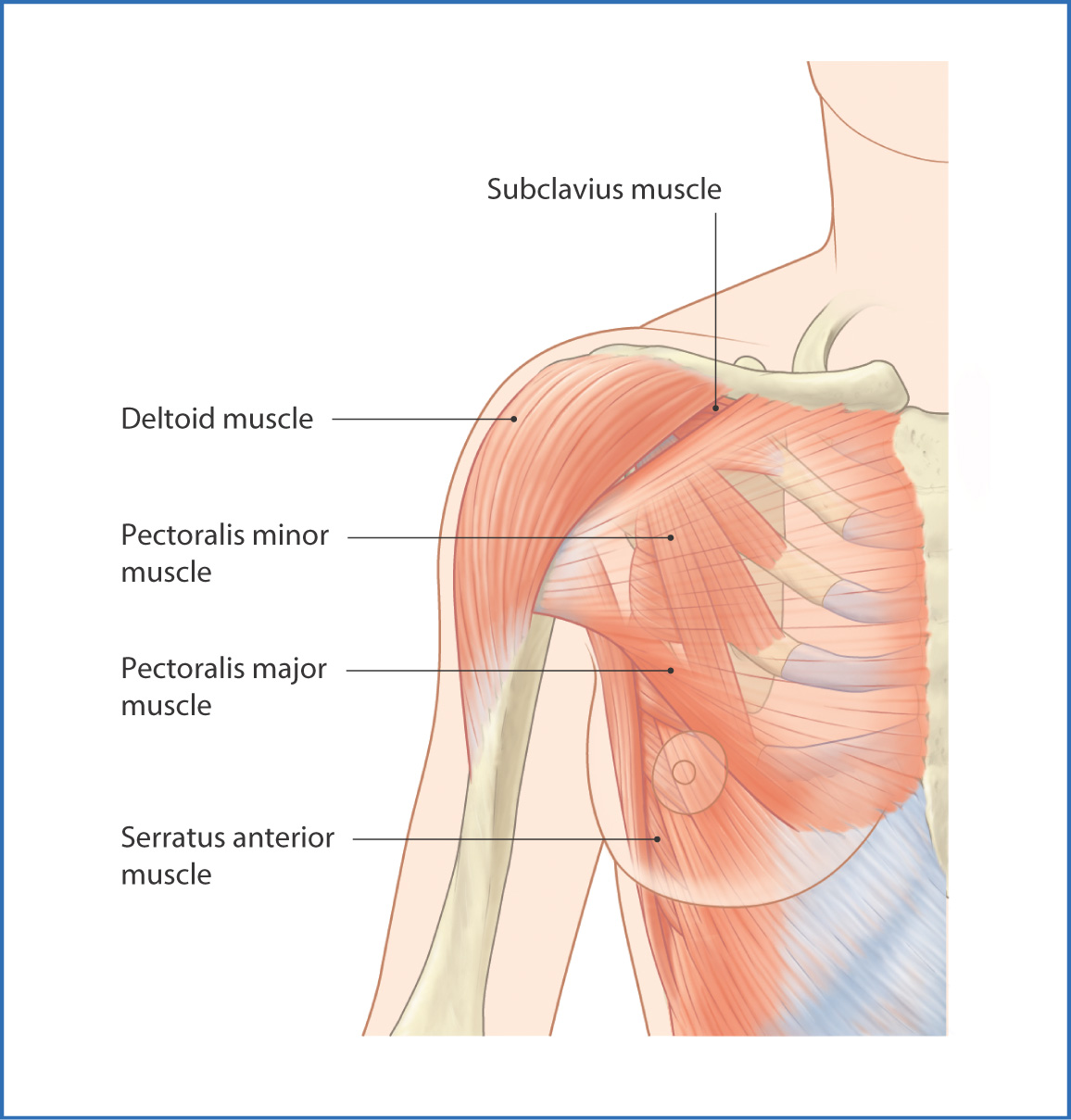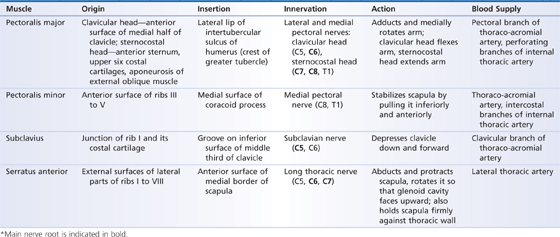
15
Breast and Pectoral Region
The breast and pectoral region is on the anterior and superior part of the thorax (chest). In addition to containing muscles and fascia that assist in movement of the upper limb, this region also contains the mammary glands, which secrete milk (Fig. 15.1). Structural support for the pectoral muscles and the mammary glands is primarily provided by the upper eight ribs along with their attachment to the lateral part of the sternum by way of costal cartilages. The four pectoral muscles discussed later all attach the axial skeleton to the appendicular skeleton.

FIGURE 15.1 Female breast (anterior view).
Muscles
The upper limb is connected to the chest by the sternoclavicular joint (see Chapter 18), with the pectoral muscles providing muscular attachment to the anterior aspect of the torso (Fig. 15.2).

FIGURE 15.2 Pectoral muscles.
The largest muscle (Table 15.1) in the breast and pectoral region is the pectoralis major muscle, which is a fan-shaped muscle originating from the anterior rib cage, sternum, and clavicle. Its large sternocostal head joins with the smaller clavicular head and inserts onto the anterior superior portion of the humerus (crest of the greater tubercle). It adducts, flexes, and medially rotates the arm.
TABLE 15.1 Pectoral Muscles*

The pectoralis minor muscle lies deep to the pectoralis major and covers the second part of the axillary artery and the cords of the brachial plexus. It originates from ribs III to V, inserts onto the coracoid process of the scapula, and stabilizes the scapula by pulling it inferiorly and anteriorly. The subclavius muscle is small, rounded, and inferior to the clavicle. It joins the inferior surface of the clavicle to rib I and pulls the clavicle inferiorly and anteriorly.
The serratus anterior muscle is a thin muscular sheet overlying the lateral part of the thoracic cage and intercostal muscles. It arises from the upper eight ribs and wraps around the rib cage to insert posteriorly along the entire medial border of the anterior portion of the scapula. It becomes the major protractor for the upper limb (“boxer’s muscle”).
Nerves
Sensory (cutaneous) innervation of the superior pectoral region is by the supraclavicular nerves (C3, C4); the inferior pectoral region is supplied by the anterior and lateral pectoral cutaneous branches of the third to sixth intercostal nerves.
Motor innervation of the pectoralis major and minor muscles is by the medial and lateral pectoral nerves, which are branches of the medial and lateral cords of the brachial plexus. The medial pectoral nerve (C7 to T1) arises from the brachial plexus and pierces the pectoralis minor muscle; it supplies both the pectoralis minor muscle and the overlying pectoralis major muscle. The lateral pectoral nerve (C5, C7) runs medially from the lateral cord of the brachial plexus and innervates the pectoralis major muscle.
The subclavian nerve (C5) originates from the superior trunk of the brachial plexus and passes medially to enter the superior posterior part of the subclavius muscle.
The serratus anterior muscle is innervated by the long thoracic nerve (C5 to C7). Its three roots arise from the back of these three anterior rami.
Arteries
Blood is supplied to the medial part of the pectoral region (Fig. 15.3) by the internal thoracic artery, which branches from the inferior surface of the subclavian artery, runs along the internal surface of the rib cage toward the anterior abdominal wall muscles, and gives off numerous branches. These branches perforate the spaces between the ribs to supply the pectoral muscles and breast.

FIGURE 15.3 Axillary artery.
The lateral part of the pectoral region receives blood from the thoraco–acromial and lateral thoracic branches of the axillary artery. The thoraco-acromial trunk gives off four branches: the acromial, deltoid, clavicular, and pectoral branches, which are named after the regions that they supply.
Stay updated, free articles. Join our Telegram channel

Full access? Get Clinical Tree


